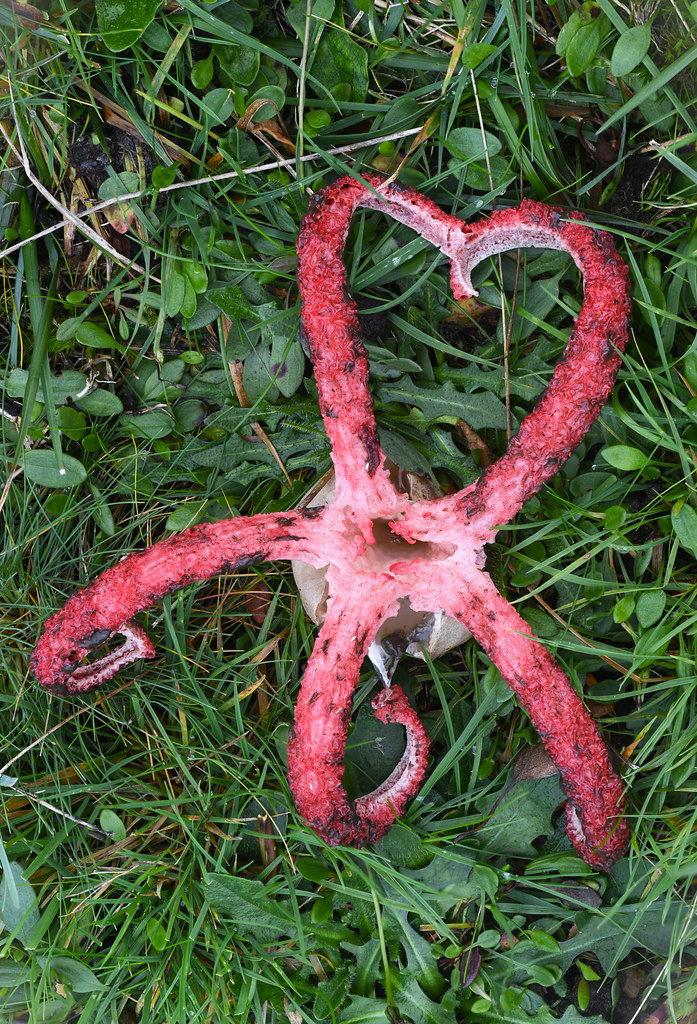#non native species
Text
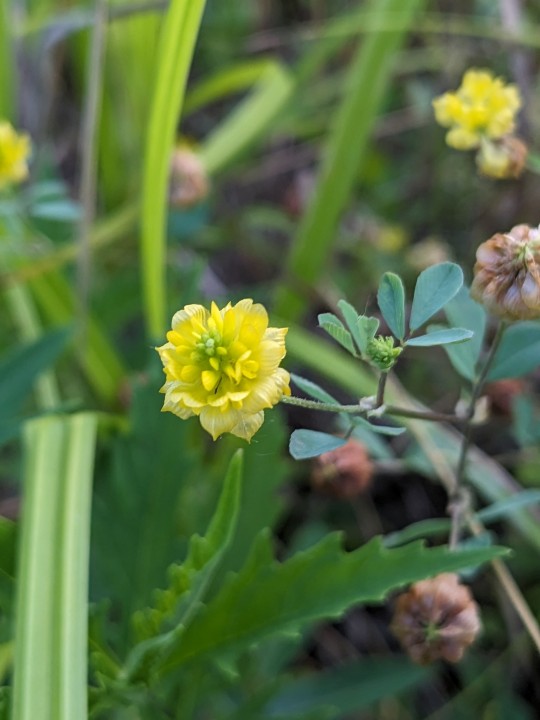
Hop Trefoil Clover
Trifolium campestre
This species of trifolium is not native to the United States, its native range is in Europe and Western Asia, but it has now been introduced in some areas of the US due to being grown for fodder and escaping. However, it's not yet listed as an invasive species here.
June 17th, 2023
Weldon Spring, St. Charles County, Missouri, USA
Olivia R. Myers
@oliviarosaline
#botany#Trifolium campestre#trifolium#clovers#shamrocks#legumes#fabaceae#flowers#plants#Missouri#Hiking Missouri#Nature#fields#woods#outdoors#hiking#exploring#yellow#yellow flowers#Missouri nature#naturecore#fairycore#cottagecore#invasive plants#non native species#beauty of nature#flower photography#plant photography#nature photography#photography
31 notes
·
View notes
Text
Apparently, redwoods love our damp climate. Our back neighbours used to have one, but they cut it down. Not so suitable for suburban gardens...
Can any arborists weigh in on this and any effects they might have long term on the ecosystem? Unlike in California, our sequoia are spread out all over the country. It's very unlikely that these trees will be exposed to forest fires (actually maybe not with climate change doing what it does)
10 notes
·
View notes
Text
Some photos from the open field nearby. Grape hyacinth.



0 notes
Text
In the UK there are lots of introduced and non-native species, more than 3,000 of them. A lot have no impact but some are detrimental to native species. These are known as Invasive Non-Native Species. In this video I talk about 10 of these non-native animals that are living wild in the UK.
*** Top High Graphics Games Download ***
*** Click Here For Latest Free Games - https://za.uy/yF10
More Top Funny Animal Video → https://rumble.com/c/c-1725671
---
Thanks for watching my channel videos ^◡^
SUBSCRIBE and BELL for new cute cat videos ♥
---
We really hope you enjoy our videos (≧▽≦)
Don't forget to LEAVE COMMENT below ♡
#10 more animals that should not be in the uk#10 more animals you're glad don't exist anymore#10 animals that don't exist anymore#10 animals that you should run away from#non-native species#non native species#non native species uk#invasive species uk#what species are invasive in the uk#non native animals#native and non native species#non-native species become native#non-native species biology#non-native species florida#non-native species in florida#non-native species in alabama#non-native species on an island#non-native species on an ecosystem#non-native species on the planet#non-native species of animals#pet and nature lover#animal natural life#animals nature live#nature and wild animal life#nature and animal lovers#top funny pet videos - try not to laugh#best funny dog videos try not to laugh#best funny videos animals try not to laugh#top funny animal videos uk#top funny animal videos usa
0 notes
Text
How Non-Native Plants Are Contributing to a Global Insect Decline
The impact of introduced plants on native biodiversity has emerged as a hot-button issue in ecology. But recent research provides new evidence that the displacement of native plant communities is a key cause of a collapse in insect populations and is affecting birds as well...
#non-native plants#invasive species#environment#conservation#insect decline#insect#insects#entomology#biodiversity#animals#nature#botany#plants#non-native invasive species
1K notes
·
View notes
Text
Research by Clay Trauernicht, a fire specialist at the University of Hawaii, and others has shown that the scale and frequency of wildfires have been increasing across in Hawaii from the early 1900s to the 2010s. The researchers also identified a major culprit: non-native plants.
“Wildfires were most frequent in developed areas, but most areas burned occurred in dry non-native grasslands and shrublands that currently compose 24 percent of Hawaii’s total land cover,” the researchers wrote. “These grass-dominated landscapes allow wildfires to propagate rapidly.”
The non-native grasses were brought to Hawaii by cattle ranchers in the 19th century, University of California Santa Barbara ecologist Carla D’Antonio told me. “They were selected because they were drought tolerant.”
They are also invasive. The abandoned sugar and pineapple farms across the state are quickly taken over by non-native grasses. “When the land gets abandoned, the grasses are the first invaders. All you need is a little drought to have a flammable landscape.” Maui is currently in a drought.
The grasses are an especially potent fuel, D'Antonio explained, because they grow quickly when it rains and then stick around, deeply rooted into the soil, as dry, dead organic matter, becoming a “standing layer of very ignitable fuel.”
Then after a fire, these non-native plants tend to do better than native ones, thus increasing future fire risk. Fire “has generally been shown to decrease the abundance of native woody plants because nonnative, invasive, fire-adapted plants out-compete natives for resources in the post-fire environment and tend to dominate post-fire communities,” according to a United States Forest Service review.
490 notes
·
View notes
Video
Love is...An Alien Fungus that smells of Corpses... by Will Atkins
Via Flickr:
This Devil's Fingers Fungus (Clathrus archeri) seems to be trying to communicate a message of peace and love...
#Devil's Fingers#Devil's Fingers Fungus#Clathrus#Clathrus archeri#Heart#Love#Fungus#Fungi#European Fungi#British Fungi#UK Fungi#Hampshire Fungi#New Forest Fungi#New Forest#New Forest wildlife#Fungi of Britain#Fungi of the UK#Fungi of Hampshire#Fungi of Europe#Fungi of the New Forest#Heathland#Mushroom#Toadstool#Toadstools#Alien Species#alien wildlife#Non-native species#non-native wildlife#Nikon#Nature
37 notes
·
View notes
Text
imbeing teased a little bit i think

#THIS IS /J i try not to think too much abt followers or notes i wanna have a good time here as much as i can but well. you can understand#doesnt anyone wanna hear me talk about why i think remlits and loftwings are mortal enemies + why i believe remlits are an invasive species#an invasive non-native species i should say. anyone. just me. well youre gonna hear abt it later anyways just so you know#personal.txt
27 notes
·
View notes
Text
The Secret Other Thing: KILL
This is my eighth post in a series I’ll be making on how to increase biodiversity on a budget! I’m not an expert--just an enthusiast--but I hope something you find here helps!
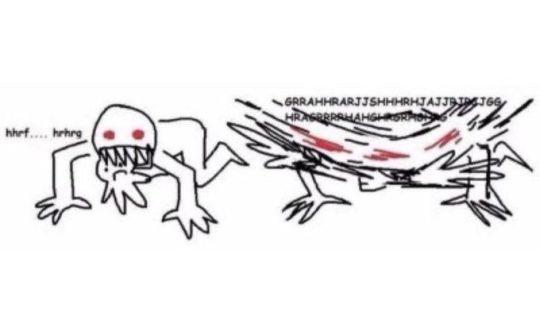
KILL, TEAR, RIP, MAIM.
You may have seen this sentiment a few times on gardening and wildlife blogs and been incredibly confused. Isn’t killing things the opposite of what you should be doing to protect habitats? In some cases, it really is necessary!
Invasive Plants
Invasive plants can do more harm than good, taking up space and nutrients and providing little in return to local wildlife--while spreading and choking out the native plants that would provide the most to our native fauna. Learn how to identify invasive species in your area and how to properly dispose of them, and do so whenever you have the opportunity! You may even be able to find volunteer groups/events where you can join up with like-minded people to remove a specific plant from an area.

(This image refers to the United States specifically--these plants aren't invasive or native everywhere!)
Pro tip, though; if you take out an invasive species and leave empty soil where it was, it’s likely another quick-growing invasive species will just move in. We don’t want that! Try to plant something in its place! If you’re going out on a mission to take out invasive plants, try to keep some native flower seeds or seedlings on your person while you do this work.
Different plants are invasive in different places, so be sure that the plant you're targeting is actually invasive to where you are. You don’t want to rip out a beneficial plant because it’s invasive somewhere else! Social media sites like Instagram and Tumblr are great for spreading information about invasive plants, but they can often be a bit… US-centric. Even I'm guilty of this, plenty of times! Plants like garlic mustard, kudzu, butterfly bush, Amur honeysuckle, wild radish, and Japanese knotweed are high-profile invasive plants that I hear about all the time here in America--but they came from somewhere, and are a part of the environment in these places! Likewise, many plants that are branded as pollinator-friendly and biodiversity boosters here in the states can be awful invasive species elsewhere. Even plants and animals that aren’t invasive in one part of a country or continent can be detrimental in another--Canadian waterweed is native to North America, but it’s actually invasive in Alaska.



(Japanese honeysuckle (Lonicera japonica) vs Coral honeysuckle (Lonicera sempervirens) vs the yellow variety of Coral honeysuckle (Lonicera sempervirens))
Be sure you’re taking out the right plant--be very confident in your ID before you take any action! Amur honeysuckle and Japanese honeysuckle, for example, may be invasive in the US--but coral and northern bush honeysuckles are native and key species in their environments. You don’t want to do harm while trying to do good--double check your IDs. Being certain with your IDs can also prevent you from doing harm to yourself and others--some plants produce toxic smoke when burned. Stay well-read on how to dispose of the invasive plants you’re targeting.

(Garlic mustard pesto! Can't say I've ever had it, but I've heard good things about it online!)
With that being said! Some invasive species can be eaten. It’s free food! And you’re helping the environment? Win-win! Try looking up recipes that use these plants, or see how you can substitute something else for them! Foraging guides and blogs would likely be extremely helpful for this.
A super easy way to help curb the spread of invasive plants is to not grow them yourself! Double check any plant you’re considering buying or growing from seed--some sold in stores like butterfly bush are often touted as great plants to add to a pollinator garden, but in reality are an invasive species that eagerly displaces native shrubs here in the states.

POV: you're working the garden center at the Blue Big Box Store, you care about the environment, and every day you watch people buy Butterfly Bush and can do jack shit about it asides from try to gently steer them towards something else (but the other next best option was also Invasive Tropical Milkweed because its easier for Big Box Store to sell) I have a personal vendetta against people who grow Butterfly Bush (I live in The States) (If you didn't know Butterfly Bush was invasive in the US before now you're valid but also please god consider replacing it with an alternative ASAP)
Invasive Animals

POV 30 to 50 feral hogs are running into your yard within 3-5 minutes while your small children play
Invasive animals and insects compete for resources, take over habitat, and can even spread disease--all while pushing native species out or dwindling their numbers. Keep track of invasive animals you see and report them. Depending on the severity of the situation, killing them can be necessary and even encouraged. Do be sure it’s an invasive species and not a look-alike. If you’re unsure, take pictures, do research, and take action the next time.
Some high-profile invasive species in the US are spotted lanternflies, cuban tree frogs, hammerhead worms, feral swine, zebra mussels, lionfish, asian carp, burmese python, and others. Again, do make sure you’re targeting species that are invasive in your area; I doubt Asian carp are considered invasive in Asia, for example. Similarly, the American bullfrog is native to the eastern US and Canada, but is quickly becoming an invasive species around the rest of the world. Not to mention, the racoon problem in Japan…

Some invasive species can be eaten as well! Some of them taste awful, and some can even be dangerous to eat or handle without caution. I would do a good amount of research online before trying to cook up just anything.
Doing it Right
If you’re trying to handle invasive species, you do have to ensure you’re doing it properly. As you do your research, you’ll likely see if the species should be photographed and reported and to what channels. Also in some cases, going about destroying them incorrectly could unintentionally help them spread--some plants spread quickly through rhizomes into disturbed soil, and hammerhead worms can actually regenerate from pieces into fully-developed new worms when you try to cut them up. Some invasive species are even actively harmful to humans, so I cannot emphasize enough that you need to be sure about what you’re dealing with and be careful about it. Giant Hogweed, for example, has toxic sap that’ll cause severe skin inflammation and painful blisters if it contacts skin and is exposed to sunlight. The blisters last for months, and the skin may develop long-term sensitivity for sunlight.
If you’re unsure about how to handle an invasive plant, or are unsure of it’s identity, try contacting your local university co-op extension service if you’re in the states. They can tell you how to remove it safely and effectively. I can't say for sure what other channels would be the best option for someone living outside the states, so if anyone knows, feel free to chime in!
Pets
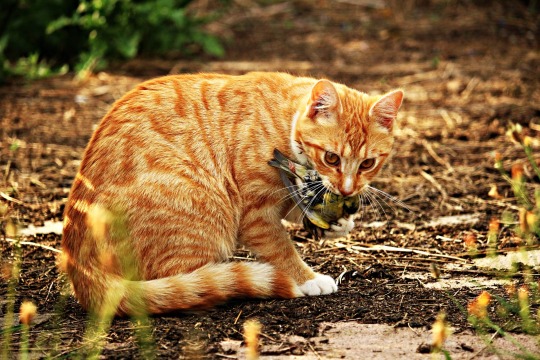
POV: ur little outdoor kitty Firestar is destroying the balance of your local ecosystem plz keep him INSIDE
Please keep your pets inside, or at least on a leash. An outdoor cat can do a lot more damage than one might imagine, as well as unrestrained dogs.
That’s the end of this post! And... technically, the last post in the series! My next and final final post is gonna be basically a giant list of all my sources that I used to make this post! I hope this post series was informative, helpful, interesting--anything of value, really! Feel free to reply with any questions, your success stories, or anything you think I may have forgotten to add in!
#biodiversity#solarpunk#gardening#invasive species#ani rambles#out of queue#the biodiversity saga#i wasn't sure where to add this in on the post but not all non natives are invasive and some native plants have sorta invasive-y habits#i dont remember the proper term that isn't just 'invasive-y' but yknow.#with that being said I tend to do a quick google search to make sure a plant I wanna buy isn't invasive before I add it to my garden#with that being said fuck big box stores STOP SELLING INVASIVE PLANTS I SWEAR TO GOD I DONT CARE IF THEY'RE POPULAR STOP IT STOP IT STOP IT#someday I will go on an entire unhinged rant about tropical milkweed#ive already done it before but I'm willing to do it again fuck it#anyways!!!! this is the last post if you don't wanna read Collection Of Links: The Musical so uh#hope this was a nice series with helpful information!! love yall byeeee
58 notes
·
View notes
Text
Calling the colonization of Palestine by the settler colonial state "Israel" a landback movement is so insulting, because some of the main things that landback is NOT is 1. Kicking everybody else off your land who isn't you , 2. Creating an ethnostate, 3. Killing people specifically for the previous two things, and Israel has done & is doing all those things
& I didn't want to derail that previous post, but Israel self Indigenizing itself to Palestine is step #8 in settler denial of Indigenous colonization

#i do not recognize the colonizer state 'Israel'. there is only Palestine & my cousins the Palestinians#& if Israelis are 'Indigenous' to there then why did they do so much damage to the land and introduce non native#& invasive plant species? why did they kill all the olive trees that were Indigenous to the area?#youd think a peoples with 'Indigenous' ties to that place wouldnt do that.#if this is overstepping let me know
38 notes
·
View notes
Text
see i can’t look at that post about delicate pretentious picky rose vs chill survivor dandiliom anymore because you know what does grow fucking everywhere? rose. you know what there’s like, maybeee a couple dozen of in a hectare? dandelion.
respect the rose listen there’s Good Reason why malificent chose to make THAT plant her impenetrable wall. multiflora will live forever and will tear you to shreds while doing it.
#roses are fucking unkillable are you Kidding#and this is just me griping about one praticular species!#not to mention others in the rosa genus!#roses grow Big and Tangled and fucking Woody#and litterally when we clip them to Fucking Get Therough these terrible rose thickets#(don’t worry they’re non-native and invasive we can fuck ‘em up all we want)#we put them UP somewhere bc if you leave them on the ground the cut bit will root out from that#and ofc it’ll grow back from the original roots#so it’s just. congrads! now you have two multiflora#like a fucking hydra#this isn’t hating on dandilions btw#they’re fine outside of the invasiveness#but just. roses are fucking hardy they deserve some respect
11 notes
·
View notes
Text
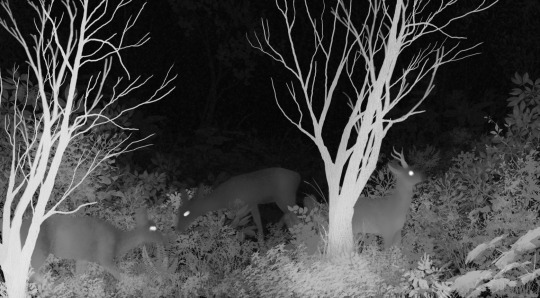
Deercember Day Seven: European Roe Deer | Fairy Festival
The European roe deer (Capreolus capreolus), also known as the Western roe or simply roe, is widespread in Europe, ranging from Scotland to the Caucasus, the Mediterranean to Scandinavia, and as far East as Iran. Roe deer populations—combining European and Siberian species—gradually become somewhat larger as one moves further to the East, peaking in Kazakhstan, then becoming smaller again towards the Pacific Ocean. In order to mitigate risk, roe deer remain within refuge habitats (such as forests) during the day. They are likelier to venture into more open habitats at night and during crepuscular periods when there is less ambient activity. Roe deer will generally not venture into a field that has or has had livestock in it. More information here.
References: Deer 1 and Background, Deer 2, Deer 3.
#week one complete!!!#had to reuse roe because I think there are only six species native to the range? and didn't want to use non-native species#interpreted “fairy” loosely because I'm drawing these in a realistic scope#so themed this off of fae‚ which trail cam night footage reminds me of#much happier with this one than the past two days!#Deercember#realHum#Art#Drawing#deer#deer art#European roe deer#Western roe deer#roe deer#Capreolus capreolus
5 notes
·
View notes
Text
remembering when i was in a server once and i mentioned how house sparrows were invasive and someone said "yeah but they're pretty much naturalized here" THATS NOT WHAT THAT MEANS
#shortext#naturalized means when a non native species establishes reproducing populations in another place. not whether theyre harmful or not GRRRRRR#house sparrows ARE naturalized AND invasive
4 notes
·
View notes
Text
The Central Park Zoo released their full necropsy results for Flaco the owl the other day- four different rodenticides were found in his system alongside a pigeon-spread virus.
The poor owl. The people who protested and prevented his recapture under the idea that he was better off ‘free’ are largely responsible for this bird’s death- he should have been removed from the park and returned to the zoo as soon as possible.
#the zoo should have tried to catch him for longer but given the ridiculous amount of protesting and the amount of animal influencers#- insisting his ‘year of freedom’ was better than captivity I’m not surprised. and fuck the asshole who released him from his enclosure#- that person condemned this bird to an early death.#like. if people felt the zoo’s conditions were insufficient they should have protested that instead of *setting a non-native species loose#- in fucking NYC*. common sense people. common sense.
4 notes
·
View notes
Text

PSA: Please, please, please
Do NOT buy or plant Mandevilla/Dipladenia plants in Europe
When Hummingbird hawk moths try to feed on the nectar they get their proboscis stuck and die a slow, horrible death. I've seen plants where every single flower had a moth dying in it. These should be illegal to sell
#moths#insects#hummingbird hawk moth#gardening#dipladenia#mandevilla#macroglossum stellatarum#psa#animal cruelty#non-native species
76 notes
·
View notes
